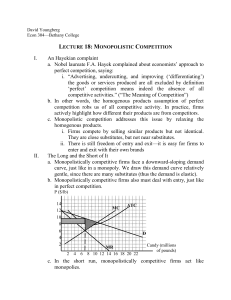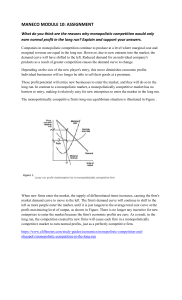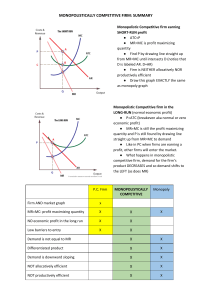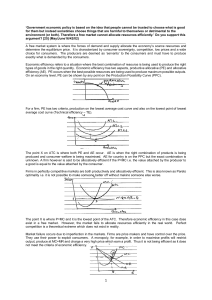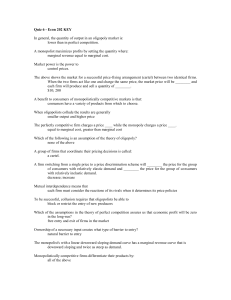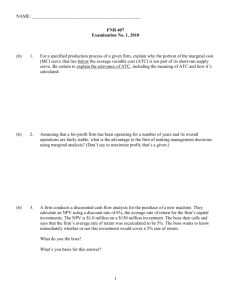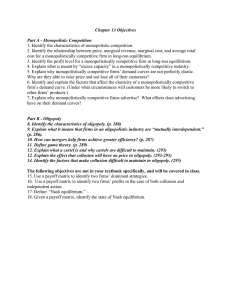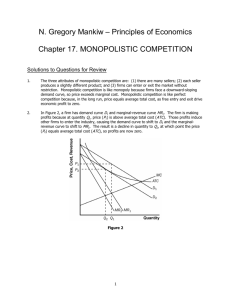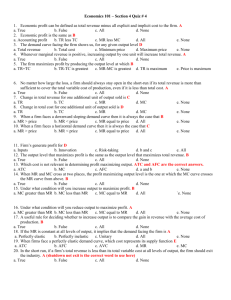ANSWER KEY Practice Free Response
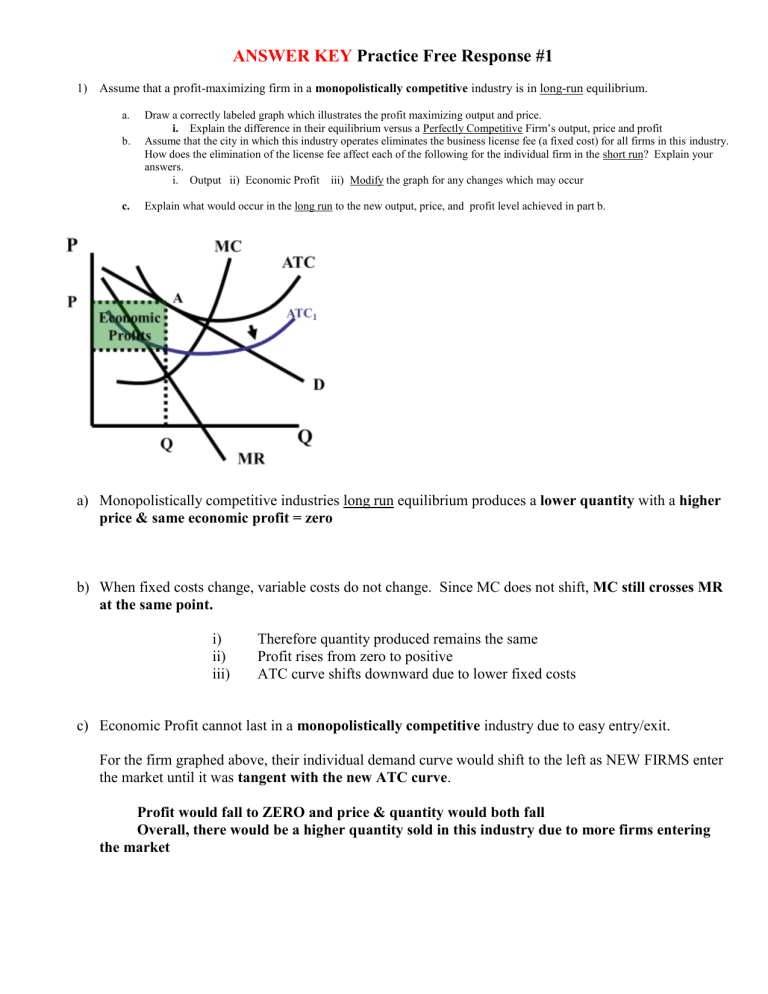
ANSWER KEY Practice Free Response #1
1) Assume that a profit-maximizing firm in a monopolistically competitive industry is in long-run equilibrium. a.
Draw a correctly labeled graph which illustrates the profit maximizing output and price. i.
Explain the difference in their equilibrium versus a Perfectly Competitive Firm’s output, price and profit b.
Assume that the city in which this industry operates eliminates the business license fee (a fixed cost) for all firms in this industry.
How does the elimination of the license fee affect each of the following for the individual firm in the short run? Explain your answers. i.
Output ii) Economic Profit iii) Modify the graph for any changes which may occur c.
Explain what would occur in the long run to the new output, price, and profit level achieved in part b.
a) Monopolistically competitive industries long run equilibrium produces a lower quantity with a higher price & same economic profit = zero b) When fixed costs change, variable costs do not change. Since MC does not shift, MC still crosses MR at the same point.
i) Therefore quantity produced remains the same ii) Profit rises from zero to positive iii) ATC curve shifts downward due to lower fixed costs c) Economic Profit cannot last in a monopolistically competitive industry due to easy entry/exit.
For the firm graphed above, their individual demand curve would shift to the left as NEW FIRMS enter the market until it was tangent with the new ATC curve .
Profit would fall to ZERO and price & quantity would both fall
Overall, there would be a higher quantity sold in this industry due to more firms entering the market
ANSWER KEY FREE RESPONSE #2
P6
P5
P4
P3
P2
P1
0
Marginal Cost
Average Total Cost
Demand
Q1 Q2 Q3 Q4 Q5 Q6
Marginal Revenue
Q7 ATTENDANCE a) Price & Quantity i.
P5 Q2 (Quantity where MR = MC) ii.
P3 Q4 (when MR = zero, TR is maximized) iii.
P4 Q3 (total welfare is maximized where P = MC) iv.
P2 Q5 (when Price = ATC profit is zero) b) Elasticity i.
Elastic ii.
Q1 is left of the midpoint of demand curve which is at c) Profits
Q4 or where demand is unit elastic i.
Accounting profit is positive (accounting profit is always greater than economic profit) ii.
Economic profit is zero (Price = ATC) d) Government Regulation i.
Q7 maximizes attendance Note: This point is still not allocatively efficient as MC > Price
